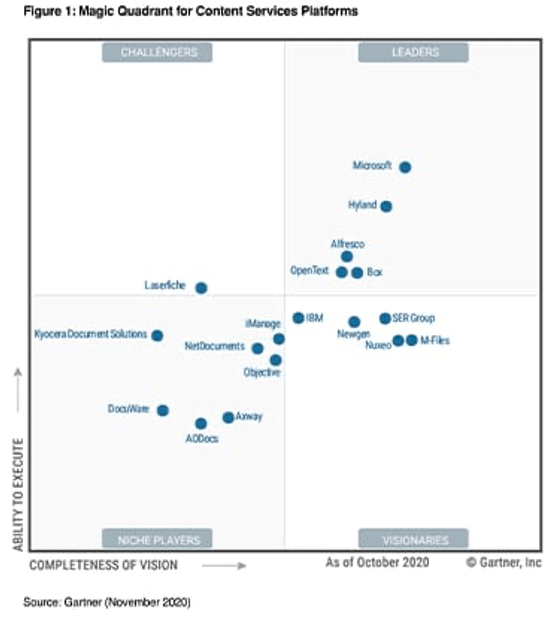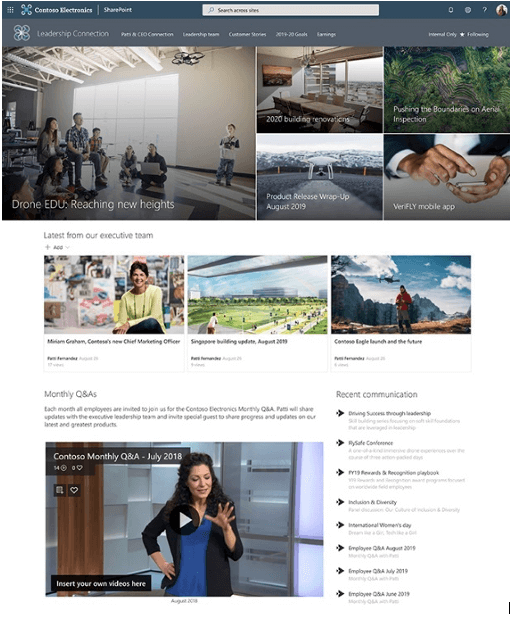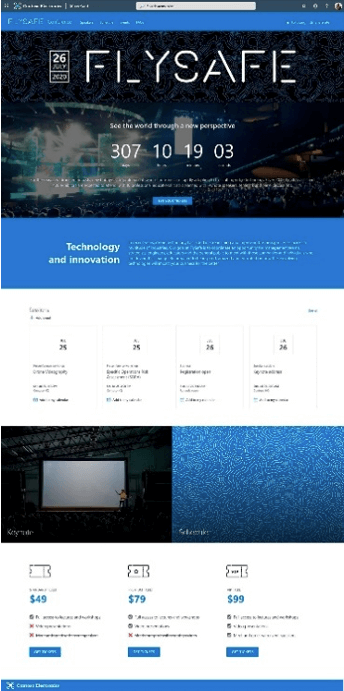- How to choose the right intranet solution
- Tips to maximize your Microsoft 365 investment
One of the most powerful tools an organization has for building culture – particularly when many employees work remotely – is an intranet. This blog explores using SharePoint Modern for your intranet.
Remember the TV series The Office? While I imagine most of us can relate to the portrayal of a workplace where no one is very happy and the ways of working are archaic, the world of work today is fortunately quite different. The seismic shift that has had to take place as a result of the pandemic has seen rapid and widespread changes to the way we work.
According to an Employee Well-being Report by Glint, employee happiness is higher than pre-pandemic levels. Compared to their peers at other organizations, employees at remote work-friendly organizations were 14% more likely to agree they feel safe to speak their minds, and 9% more likely to report that their leaders value different perspectives. A rather different picture to The Office thankfully.
The key to this is culture, and one of the most powerful tools an organization has for building culture – particularly when many employees are not in the office or are frontline workers – is technology. Creating an intranet, a robust digital hub where people can find and communicate essential information, is a fundamental step towards creating an effective, engaging and productive workspace to replace The Office-era workplace.
A successful intranet is one of those important factors for a company's success. The uptake of Microsoft 365 technology has been so widespread and rapid since the advent of Covid-19 (about 1 million companies worldwide and 70% of Fortune 500 firms use Office 365), and as ClearPeople is a leading Microsoft global partner with extensive and long-running experience with SharePoint, this blog considers the use of SharePoint Intranet in particular, although the considerations for design and implementation are applicable to any intranet software.
SharePoint is part of the Microsoft Office 365 technology stack, which is leading the market in enabling collaboration, and provides almost seamless integration across all Microsoft applications (from Outlook to Teams to SharePoint to Planner, etc.), and even other cloud providers.
If you’re on Office 365, the license for SharePoint intranet is included in your subscription, and if you’re using other Microsoft tools like Teams or Yammer that are easily integrated with SharePoint, it’s the logical and best value option for your intranet.
SharePoint has been on the market for over 20 years and of course, during this time, the application has changed substantially. This will be reassuring to those who have had negative experiences with the older versions of SharePoint. SharePoint Modern (as it’s now called) performs better, relies less on developers for customization and has an improved user interface.

MS Office 365’s market share is one reason why SharePoint is one of the most popular intranet tools, but there’s also the fact that its popularity emerges repeatedly in surveys of which platforms are being used to create intranets and digital workplaces and awards like Nielsen Norman Group’s annual top ten intranets.
While popularity and awards aren’t reasons alone to choose a platform, they do provide confidence that organizations are using SharePoint with success. Other reasons for using SharePoint for your intranet include:
As part of Microsoft Office 365, SharePoint naturally integrates with all other MS applications, including Outlook, Teams, Planner and the most recently launched MS Viva. This makes it easy to share information with colleagues and employees across various channels.
One the best thing about SharePoint is how customizable it is. In the last few years, Microsoft has invested significant time and money in developing and updating the SharePoint platform. Modern SharePoint now offers a large set of out-of-the-box features that can be customized to suit your unique business requirements.
As part of your Microsoft Office 365 subscription, SharePoint is cost-effective and provides good value.
SharePoint has a comprehensive set of features – over 100 of them, in fact. These cover everything from file storage to communication and collaboration.
Robust document management is one of SharePoint’s key features: it’s a great tool for organizing files and sharing information with co-workers and can store a wealth of information. The document library allows employees access to essential documents from one central location. This makes it easier for people to collaborate on projects or share ideas without having to email attachments back and forth. Version history is also a useful tool.
Other SharePoint features include:
SharePoint as an intranet has many benefits, including ease of use for employees, cost-effectiveness, and easier collaboration among teams. Other benefits include:
SharePoint has its downside and limitations, too. Here are some of the issues that emerge from user reviews:
Regardless of which platform you use for your intranet, it pays off to spend time on its design; a well-designed intranet can transform communication in your organization. An engaging, inclusive and easy-to-use intranet takes this a step further, creating a digital workspace where your people – and even clients, partners and suppliers – can communicate, collaborate and work more efficiently.
By design, we don’t mean just the way your intranet looks – although an attractive look and feel that showcases your brand is definitely important. But design also means thinking about how users will experience the intranet, what they need to find on it, use it for and how easy it is to use.
In his book Designing Intranets – Creating Sites That Work, James Robertson identifies 5 key pillars to build your intranet on:
These five pillars provide a firm base for your intranet, but its success depends on how it meets the audience’s needs: you need to put your users first. To do this successfully, don’t rely on assumptions about what people need: rather do the research and survey and question people about their requirements and get it right first time.
It’s also essential that you clearly identify and outline what you want to achieve with your intranet. Having key goals helps you stay on track and ensure you design your intranet right the first time. Defining these goals will also help you see weigh up which platform – SharePoint or otherwise – will work best.
Here are some recommended intranet objectives:
SharePoint can certainly help you achieve all of these intranet objectives, but it’s a good idea to list them and ensure that the intranet solution you choose can deliver on each of your goals.
Here are some blogs, whitepapers and other resources you may find useful if you’ve identified an intranet as an essential tool to help you build employee experience and achieve organizational goals:
Microsoft has created the SharePoint lookbook to provides ideas and inspiration and to give you an idea of what can be achieved when creating an intranet using SharePoint. Below are some examples from the site:
In conclusion, Microsoft has invested heavily in evolving SharePoint into a robust and secure hub where people can find and use company information. SharePoint intranet makes for a solid intranet platform and if you’re already using Microsoft 365, it’s a practical choice with a wide range of features.


Internal communications managers, digital transformation managers, CIOs and anyone who is aware of how effectively collaboration, communication and knowledge sharing drives productivity and allows people to do their best work, may well want something more than ‘just’ an intranet. A digital workplace engages people, enabling them to do and achieve more, and to feel more empowered about how they contribute to the organization's success.
Atlas is a digital workplace solution built on and for Microsoft 365 so it adds an extra layer of user-friendliness, ease of use and functionality to SharePoint intranet. Features like a powerful search functionality, artificial intelligence and automation to name a few, transforms an intranet into a digital hub where people can connect, communicate and collaborate at the next level.
Where would you say your organization is on the intranet to digital workplace journey and what platform have you chosen to support it?
Subscribe to our newsletter
This site is protected by reCAPTCHA and the Google Privacy Policy and Terms of Service apply.

This site is protected by reCAPTCHA and the Google Privacy Policy and Terms of Service apply.